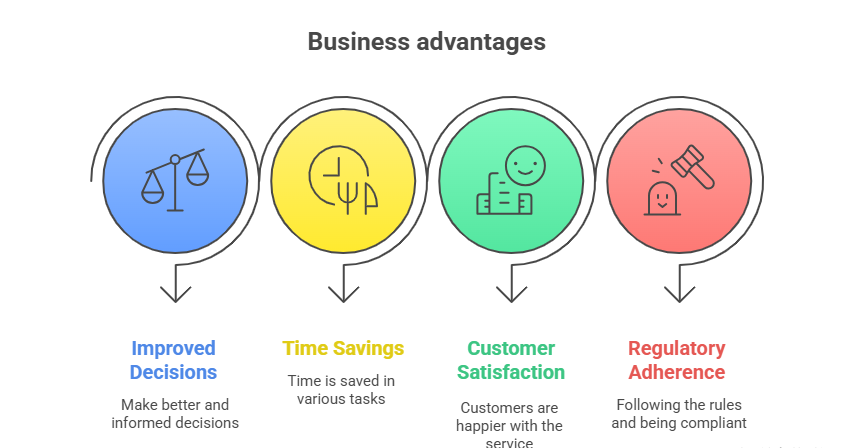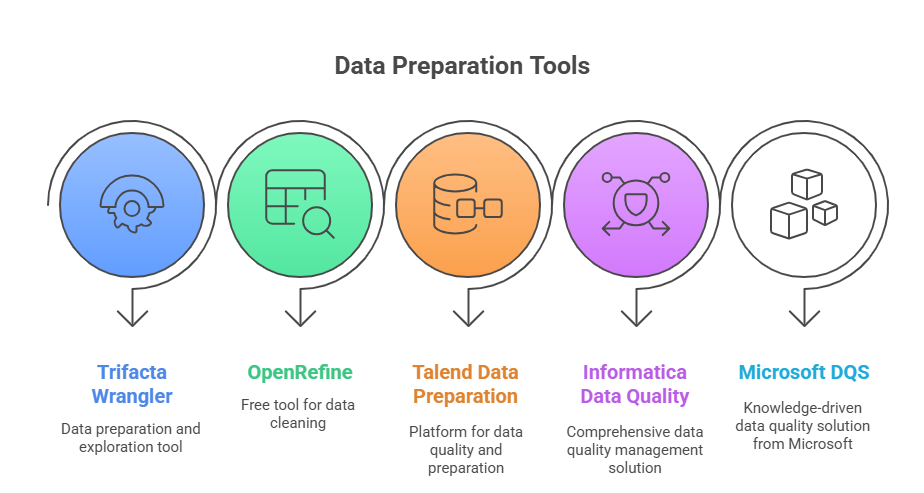Summary: This blog explains the importance of data hygiene, its benefits, and a practical checklist for maintaining clean data. It covers tools, best practices, and the differences between data hygiene, data quality, and data integrity—essential knowledge for any business or aspiring data professional.
Introduction
In today’s digital world, data is everywhere and more powerful than ever. Every business, big or small, relies on data to make smart decisions, improve operations, and stay ahead of the competition. With massive amounts of data flowing in daily, keeping it clean, accurate, and usable is important. That’s where data hygiene comes in.
Before we dive into the checklist and tools, here’s something to think about:
The global data science platform market was worth USD 103.93 billion in 2023. It’s expected to grow to USD 776.86 billion by 2032, with a CAGR of 24.7%.
This rapid growth shows just how much businesses depend on good data. But to make the most of it, we must keep it in top shape, just like we do with our homes or health. Let’s explore data hygiene, why it matters, and how to maintain it using smart practices and tools.
Key Takeaways
- Data hygiene ensures data accuracy, consistency, and relevance for better decision-making.
- Clean data increases productivity, customer satisfaction, and regulatory compliance.
- Use tools like Talend, OpenRefine, and Trifacta to automate and simplify data cleaning.
- A solid data hygiene strategy includes validation, deduplication, and enrichment.
- Learning data science through platforms like Pickl.AI boosts your ability to handle data professionally.
What is Data Hygiene?
Data hygiene—also called data cleansing or data scrubbing—means cleaning and fixing your data to ensure it’s accurate, complete, and up to date. Think of it like brushing and flossing your teeth: it’s not glamorous but essential for long-term health.
When practicing data hygiene, you:
- Remove duplicate entries
- Fix spelling or format mistakes
- Fill in missing details
- Check that information matches real-world facts
- Add useful context (called data enrichment)
Clean data helps businesses make better decisions, avoid costly mistakes, and build customer trust.
Why is Data Hygiene Important?

Messy data leads to bad decisions. Clean data gives businesses a clear picture of what’s happening and what to do next. Here’s why data hygiene is so critical:
- Better decisions: When data is accurate, decisions are based on facts, not guesswork.
- Saved time: Teams spend less time fixing errors and more time on meaningful work.
- Happy customers: Correct contact info and purchase history help improve customer service.
- Regulatory compliance: Clean data helps meet privacy laws and avoid fines.
In short, data hygiene makes your business smarter, faster, and more trustworthy.
Key Benefits of Data Hygiene
Here are the biggest wins of keeping your data clean:
- More accurate insights: Reliable data leads to better business strategies.
- Improved productivity: No time wasted cleaning up messy info.
- Customer satisfaction: Up-to-date records help serve customers better.
- Stronger compliance: Helps follow laws like GDPR or HIPAA.
Data Hygiene Checklist: Smart Practices for Clean Data
Maintaining clean, reliable data doesn’t have to be complicated. By following a few smart and consistent practices, businesses can avoid common data problems and keep their systems running smoothly. Here’s a quick checklist of key steps to help you maintain high data hygiene standards:
- Regular Cleaning: Review your data often to fix errors, remove outdated information, and fill in missing values.
- Deduplication: Identify and delete duplicate entries that can lead to confusion and incorrect analysis.
- Standardisation: To ensure consistency, use the same format for data like names, addresses, and dates across all systems.
- Data Validation: Ensure that all data entries are logical and accurate, such as using the correct phone number formats.
- Privacy & Security: Protect sensitive data with strong security controls and limited access.
- Governance & Roles: Assign who is responsible for maintaining and managing data.
- Automation Tools: Use software to detect and fix common data issues automatically.
- Profiling & Monitoring: Regularly check the quality of your data to catch and fix problems early.
- Data Enrichment: Add missing context or useful details from trusted sources.
- Staff Training: Educate employees on data hygiene practices and why clean data matters.
Top Tools for Data Hygiene

You don’t have to do it all manually. These tools help keep your data in shape:
Trifacta Wrangler
- Good for: Drag-and-drop data cleaning
- Highlights: Real-time alerts, team collaboration
- Watch out: Free version has limits; steep learning curve for advanced tasks
OpenRefine (Free & Open Source)
- Good for: Handling messy data sets
- Highlights: Strong cleaning features, supports custom scripts
- Watch out: Requires some technical know-how; limited tool integrations
Talend Data Preparation
- Good for: Business users and data teams
- Highlights: Cloud or on-premise use, great for automation
- Watch out: Advanced features require payment; slow with large data
Informatica Data Quality
- Good for: Big companies with large data systems
- Highlights: Deep cleansing, works with other Informatica tools
- Watch out: High cost; needs training to master
Microsoft Data Quality Services (DQS)
- Good for: SQL Server users
- Highlights: Works in real-time, removes duplicates
- Watch out: Best with Microsoft systems; lacks some advanced features
💡 Tip: Pick a tool that fits your budget, team size, and existing technology stack.
Data Hygiene v/s Data Quality vs Data Integrity
These terms are often mixed up, but they’re not the same. Here’s a quick comparison:
Closing Curtain
In the age of big data, having clean, accurate, and useful data is like having a solid foundation for your business. Bad data can throw everything off track, whether you’re building AI models, running reports, or simply emailing customers.
Following a simple data hygiene checklist, using the right tools, and training your team can make a huge difference. Clean data doesn’t just reduce errors—it drives growth, builds trust, and keeps your business ready for the future.
To stay ahead in the data-driven world, consider leveling up your skills. Pickl.AI offers practical, industry-ready data science courses that help you master the tools and techniques needed to manage and clean data like a pro. Whether you’re just starting out or upskilling, Pickl.AI gives you the foundation to succeed in today’s data-driven careers.
Frequently Asked Questions
What is data hygiene and why is it important?
Data hygiene is cleaning and maintaining accurate, consistent, and up-to-date data. It’s essential because poor-quality data leads to bad decisions, lost revenue, and compliance risks.
How often should businesses perform data hygiene checks?
Businesses should review and clean their data regularly, monthly or quarterly, depending on volume. Regular checks prevent errors, ensure compliance, and improve decision-making.
Which tools are best for maintaining data hygiene?
Top tools include Trifacta Wrangler, OpenRefine, Talend Data Preparation, and Informatica. They automate cleaning, deduplication, and standardization to keep your data clean and reliable.




